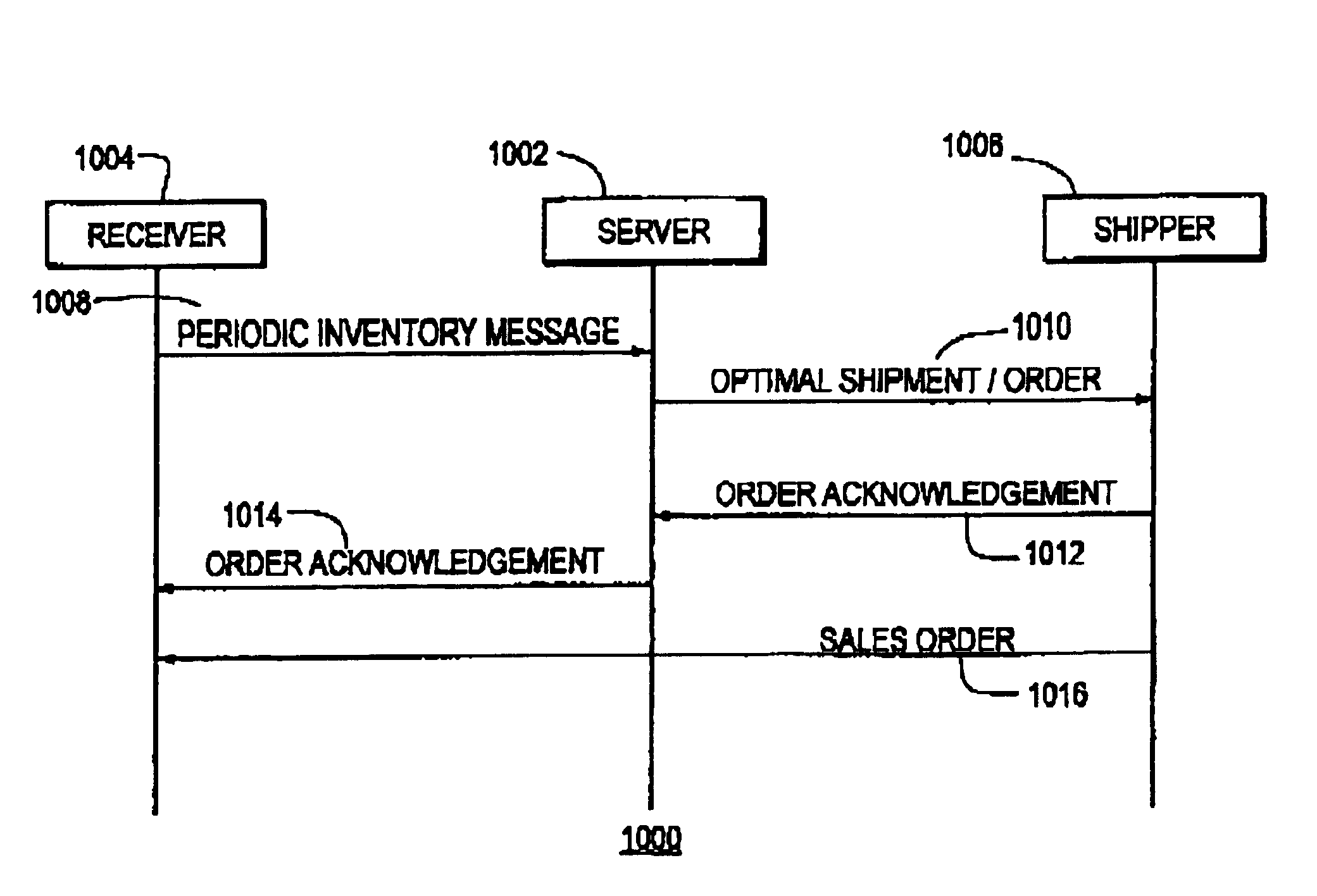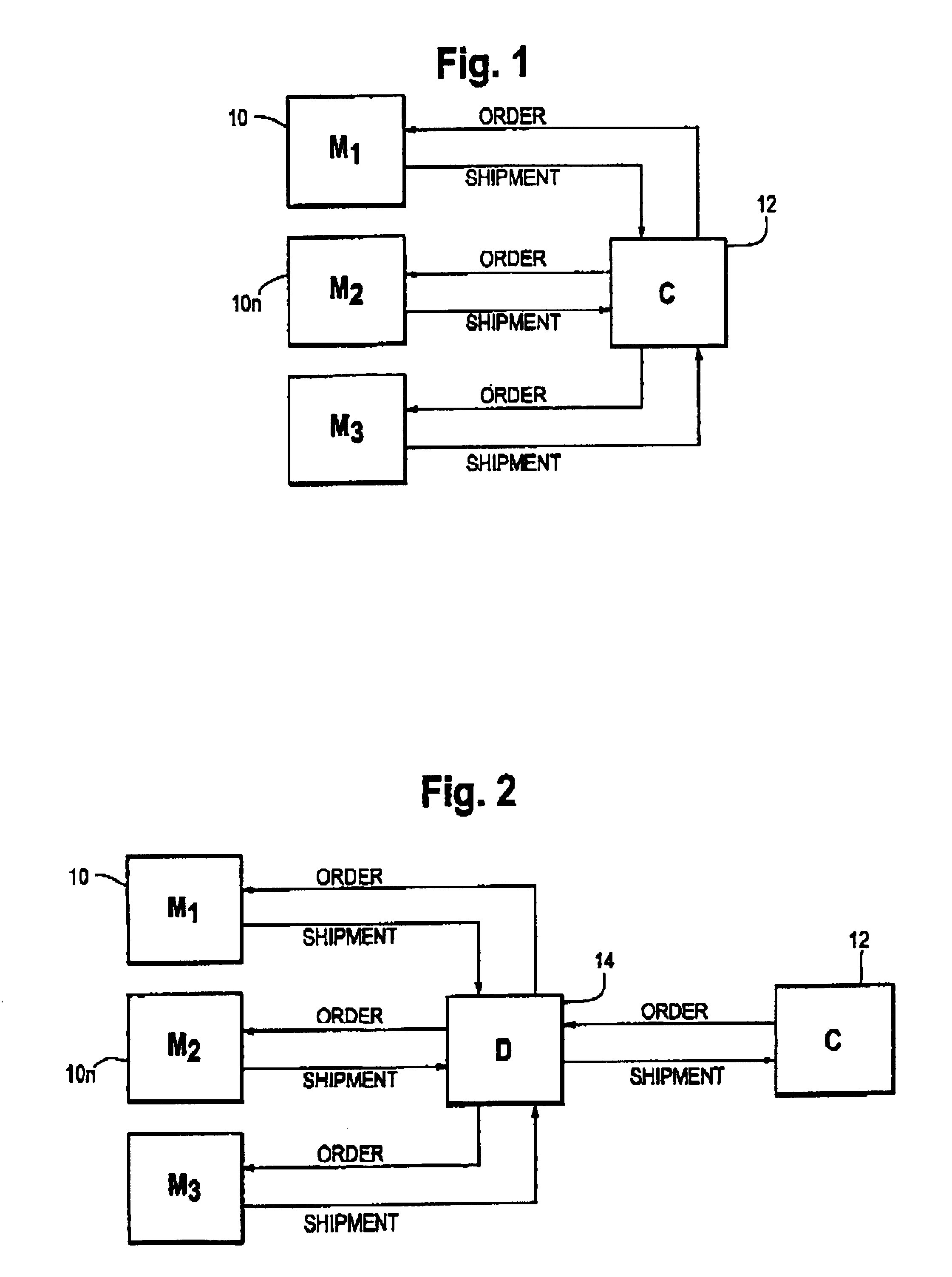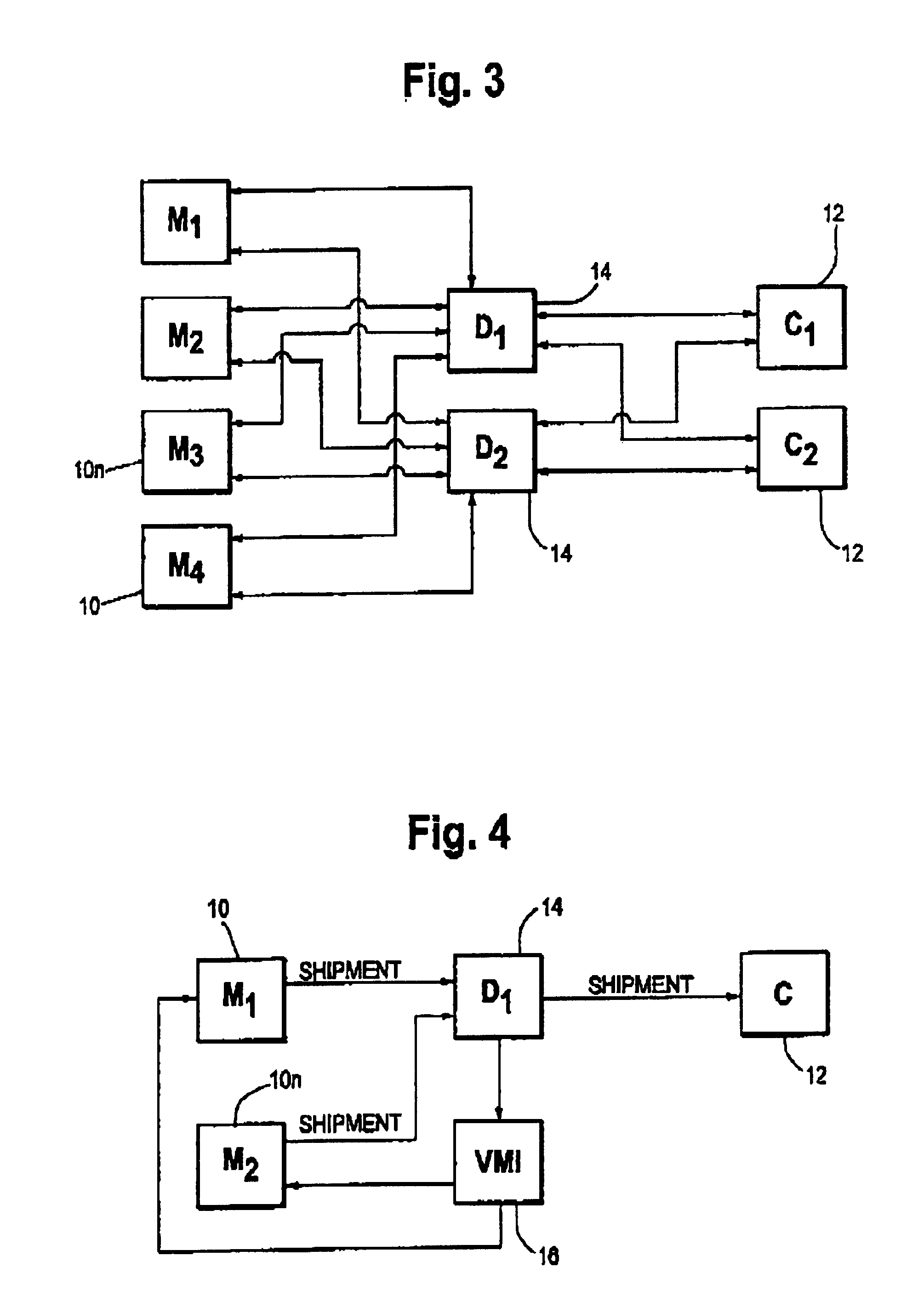Transport vehicle capacity maximization logistics system and method of same
- Summary
- Abstract
- Description
- Claims
- Application Information
AI Technical Summary
Benefits of technology
Problems solved by technology
Method used
Image
Examples
Embodiment Construction
[0034]As described herein, the term shipper is used to denote a company that ships products or goods to another, such as a receiver. However, for the purpose of clarity only, and without being limited thereto, some embodiments may describe shippers as manufacturers and receivers as distributors. In some embodiments, receivers may be customers also. It is understood that the invention is not so limited between manufacturers and distributors. As also explained herein, shippers are different legal entities, or companies that operate separately.
[0035]As used herein, the term “vehicle” is used to denote any modality of shipping or anything capable of carrying goods. It can include, but is not limited to, ships, barges, vans, trailers, cars, trucks, trains, airplanes, containers, pallets, cubes, etc.
[0036]Also as used herein, the term “product” can mean either the same product, a different product, or a newly created product. In other words, just because product X is initially ordered, do...
PUM
 Login to View More
Login to View More Abstract
Description
Claims
Application Information
 Login to View More
Login to View More - R&D
- Intellectual Property
- Life Sciences
- Materials
- Tech Scout
- Unparalleled Data Quality
- Higher Quality Content
- 60% Fewer Hallucinations
Browse by: Latest US Patents, China's latest patents, Technical Efficacy Thesaurus, Application Domain, Technology Topic, Popular Technical Reports.
© 2025 PatSnap. All rights reserved.Legal|Privacy policy|Modern Slavery Act Transparency Statement|Sitemap|About US| Contact US: help@patsnap.com



